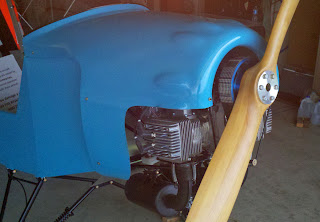I'm asking: what is the world's lightest airplane?
I'm not asking what is the world's smallest: that honor may be held by this airplane, the Bumble Bee II. Read about it on Wikipedia.
The Bumble Bee II is definitely not light, weighing in at 396 pounds. Any Belite is lighter than that.
But Guinness points to an aircraft called the Wee Bee as the world's lightest. (I find the name Wee Bee very interesting!)
You can read about it here, and they claim it had an empty weight of 210 pounds. It looks fairly fatal, because the pilot rides on top, face first. Any accident is going to be a killer:
The 1949 Popular Science article this photo is taken from is a must read.
And it's a Wee Bee. Just can't get over that.
A Belite can be built with a weight of 210 pounds. But Belites are definitely not the lightest planes in the world: what about the Easy Riser, of John K Moody fame? It weighed a little more than half what our planes weigh.
And also, what about various Human Powered Aircraft? These have been around quite awhile. Here's a pic of one, in flight:
 |
| Human Powered Gossamer Condor, in flight |
So I'm really asking: what is the world's lightest, gasoline or electric, human carrying airplane with an enclosed cockpit?
Here are the rules:
1) Must be gasoline or electric. (Disqualified Human Powered, which weigh less than 100 pounds...)
2) Must have an enclosed cockpit. (Disqualifies the WeeBee)
3) Must be fairly conventional: wings, engine, tail, or canard. (Disqualifieds weird stuff, like balloons.)















